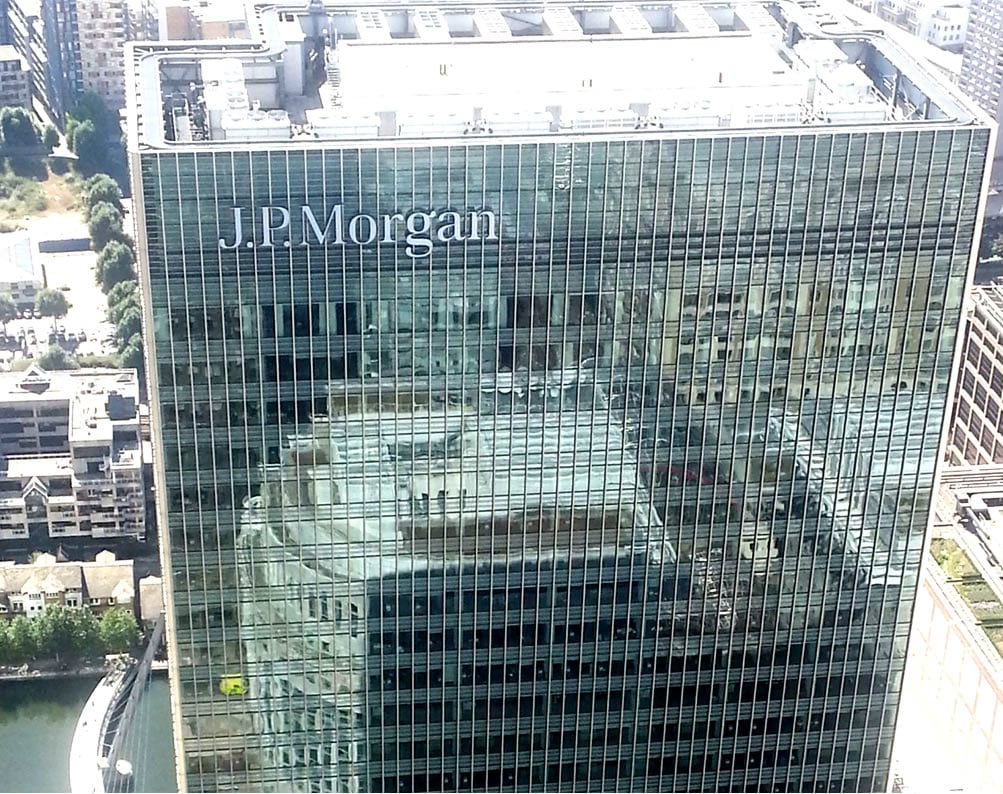Pound Forecasts Upgraded at World’s Largest Investment Bank

Foreign exchange analysts at JP Morgan have upgraded their forecasts for the British Pound for the remainder of 2017 and the duration of 2018.
The world’s largest investment bank issued the changes to their forecast targets as Sterling is seen performing better than many analysts had expected over the course of the past month.
“The trade-weighted index looked to be breaking down in March on evidence of a broader economic slowdown, but has since rallied 2% on a combination of better macro-economic and political news,” says Paul Meggyesi, a foreign exchange analyst in JP Morgan’s London office.
Meggyesi still expects a weaker GBP over time as the UK economy underperforms and real yields decline to nearly -3%.
The analyst is referring to the yield on UK sovereign debt. If the yield - i.e the return investors can expect when investing in bonds is set to fall - then international investors are likely to look for opportunities elsewhere. Should yields start to rise then we might expect more capital to come to the UK which would bid Sterling higher.
But, JP Morgan see upside risks to their forecasts for the Pound an have lifted their headline GBP/USD forecast a percent in recognition that the economy might not slow as much as they had initially feared.
“The current account deficit that has already halved, and a more conciliatory tone from the government towards the Brexit negotiations that holds out hope of a transitional deal and a less disruptive exit,” says Meggyesi.
Analysts doubt whether the Pound to Dollar exchange rate will sustain moves below 1.20.
The forecast for EUR/GBP is cut from 0.88 to 0.87 (mid-year) and from 0.92 to 0.91 (end-year).
This equates to a Pound to Euro exchange rate upgrade from 1.1364 to 1.1494 for mid-year and 1.0869 to 1.0989 for the end-of-year.
The bank forecasts the EUR/USD exchange rate at 1.08 by September ahead of a rise to 1.15 by the end of the year.
 Pound's April Rally Intact - Could Extend a Little Further
Pound's April Rally Intact - Could Extend a Little Further
Pound Sterling is now looking quite expensive if we consider JP Morgan's forecast targests and assume they are correct.
However, that the Pound is rallying should come as no suprise to those who know the Pound always tends to rally in April.
For the last 12 years without fail, GBP has rallied against the USD with an average monthly gain of 2.2%.
It appears that this month is the same - could we see gains extend into May and then a fresh dip take place.
A number of analysts think this will be the case and the Pound is ultimately pointed lower, particularly as negotiations with the European Union over Brexit conditions will start up over the summer.
“The UK-specific risks of Brexit negotiations suggest that short squeezes in GBP will prove to be aberrations on a downward trajectory,” says Kamal Sharma, an analyst with Bank of America Merrill Lynch Global Research.
Bank of America forecast GBP/USD at 1.15 by mid-2017, 1.16 by the third quarter, 1.19 by the end of the year and 1.20 by the end of the first quarter of 2018.
The GBP/EUR exchange rate is forecast at 1.1236 by mid-2017, 1.1364 by the end of the third quarter where it should stay through to the end of the year and into the end of the first quarter of 2018.
By contrast, Barclays who we note as being bullish on the Pound, anticipate the GBP/EUR exchange rate to rise to 1.19 by mid-year, 1.2345 by the end of the third quarter and 1.2820 by the end of 2017.
By March 2018 the exchange rate is forecast to be at 1.3158.
GBP/USD is forecast to trade at 1.30 by mid-year, 1.31 by the third-quarter of 2017, 1.32 by the end of 2017 and 1.38 by March 2018.
Meanwhile, we can report that Standard Chartered are looking to buy Sterling and sell Euro's in anticipation of further strength in the UK currency.
However, the gains are only expected to extend through the course of August and the call is therefore a tactical call.
The longer-term view of Standard Chartered is that the Pound will edge lower over coming months.




